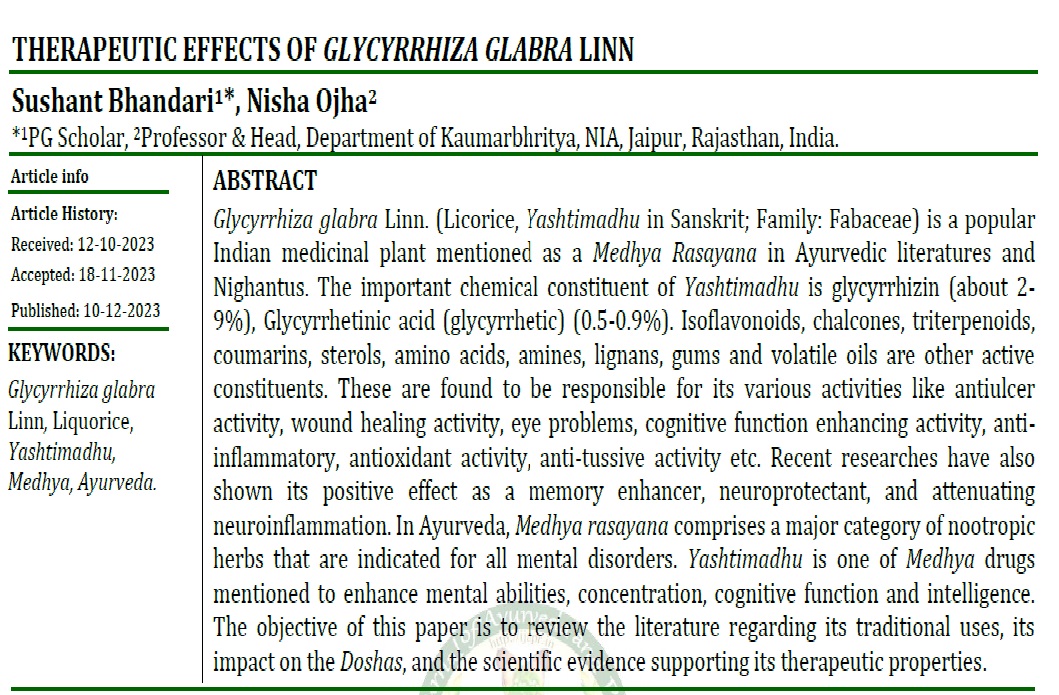Therapeutic Effects of Glycyrrhiza Glabra Linn.
DOI:
https://doi.org/10.47070/ijapr.v11i11.2910Keywords:
Glycyrrhiza glabra Linn, liquorice, Yashtimadhu, Medhya, AyurvedaAbstract
Glycyrrhiza glabra Linn. (Licorice, Yashtimadhu in Sanskrit; Family: Fabaceae) is a popular Indian medicinal plant mentioned as a Medhya Rasayana in Ayurvedic literatures and Nighantus. The important chemical constituent of Yashtimadhu is glycyrrhizin (about 2-9%), Glycyrrhetinic acid (glycyrrhetic) (0.5-0.9%). Isoflavonoids, chalcones, triterpenoids, coumarins, sterols, amino acids, amines, lignans, gums and volatile oils are other active constituents. These are found to be responsible for its various activities like antiulcer activity, wound healing activity, eye problems, cognitive function enhancing activity, anti-inflammatory, antioxidant activity, anti-tussive activity etc. Recent researches have also shown its positive effect as a memory enhancer, neuroprotectant, and attenuating neuroinflammation. In Ayurveda, Medhya rasayana comprises a major category of nootropic herbs that are indicated for all mental disorders. Yashtimadhu is one of Medhya drugs mentioned to enhance mental abilities, concentration, cognitive function and intelligence. The objective of this paper is to review the literature regarding its traditional uses, its impact on the Doshas, and the scientific evidence supporting its therapeutic properties.
Downloads



